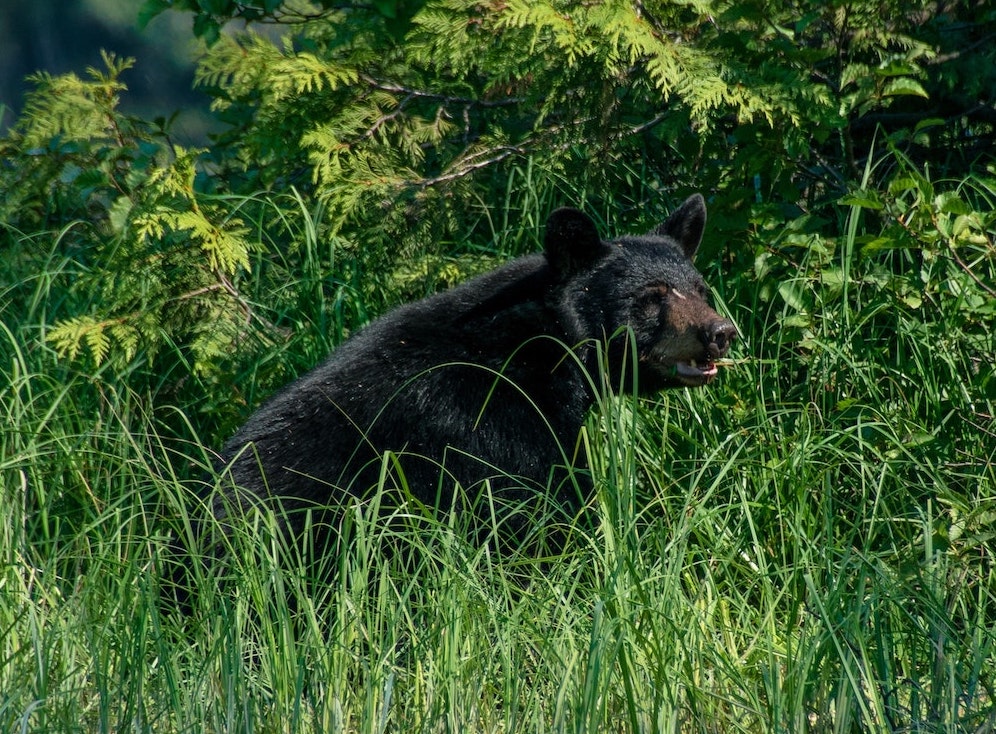When I was six, I ran from a bear.
It was a typical early-August day in the North, the kind of day where summer makes its last stand before losing its footing to fall. I was picking blueberries. Sand piled up in my velcro shoes, berry guts were smeared on my face, and a host of mosquitos begged for my sweet, innocent blood. There was little incentive for my cooperation—both from the mosquitos and my supervisor.
I saw the animal on one of my frequent breaks; it was peering from behind a tree 30 feet away.
“Mom, there’s a bear.”
—
In elementary school, the local Conservation Officers would visit our class once a year and give a presentation about what to do in the event of meeting a bear. Their first instruction was to make yourself look bigger than you really are. This could be done by stretching your arms high above your head or holding objects, like sticks, to increase arm span. Next, we were told to assert dominance, and the best way to accomplish this was to yell at the animal. Useful phrases included:
“Go away, Bear!”
“Hey, Bear!”
“Get out of here, Bear!”
Just about anything that reminded the bear it was a bear, and you were an angry human, would suffice.
The officers’ best tip on bear encounters was to prevent them in the first place. This might be accomplished by establishing your presence in the forest through different noise-making techniques. Some of my classmates attached bells to their backpacks and others, like me, preferred to talk to themselves. Bears are most likely to attack when startled and they prey on the lonely. I liked to think talking to myself both informed the bear of my presence and tricked it into thinking I had a big group of friends.
When I met the bear on that August day, I ignored all of the CO’s advice.
I ran.
—
I was nineteen the next time I had a bear within 30 feet of me. It was crumpled and bloodied, lying beside my feet on a flat-bottomed boat. I didn’t pull the trigger, but it felt like I had killed it.
The bear wasn’t as heavy as I thought it would be. It only took two people to lift it onto the butchering table. Its teeth weren’t white or sharp, the claws were chipped and dull, and the black fur was matted and reeked in places. The eyes were like fully extinguished coals.
For the next few hours, in the rotting depths of a June night, I helped break down the animal into vacuum sealed bags and a coat of fur.
When I was six, I ran from twelve bags of meat, two roasts, a skull, and a gnarled blanket.
—
The blueberry excursion was not the first time I had encountered, and ran away from, a bear. I’ve seen them dominate playgrounds, hibernate in classrooms, and congregate in the boys’ change room. A bear broke my binder in Grade 5 when I held it out on the bus to make myself look bigger. I tried yelling at the bear and calling it by its name, but it mauled me anyway. When I attempted talking to myself, this only seemed to attract more from the forest.
It also wasn’t my first time butchering a bear on that nineteen-year-old night. After experiencing the shortcomings of the CO’s avoidance methods, I quickly learned to take the offensive: I hunted the animal. I knew where to aim and how to bring them down when they smugly lounged beneath my treestand. I was experienced at peeling off their fur and exposing their blunted teeth and scrawny bodies. But on the cool June night, in the putrid garage, it occurred to me that all those times when I had stripped a bear of its skin, I donned the fur.
I became the bear.
